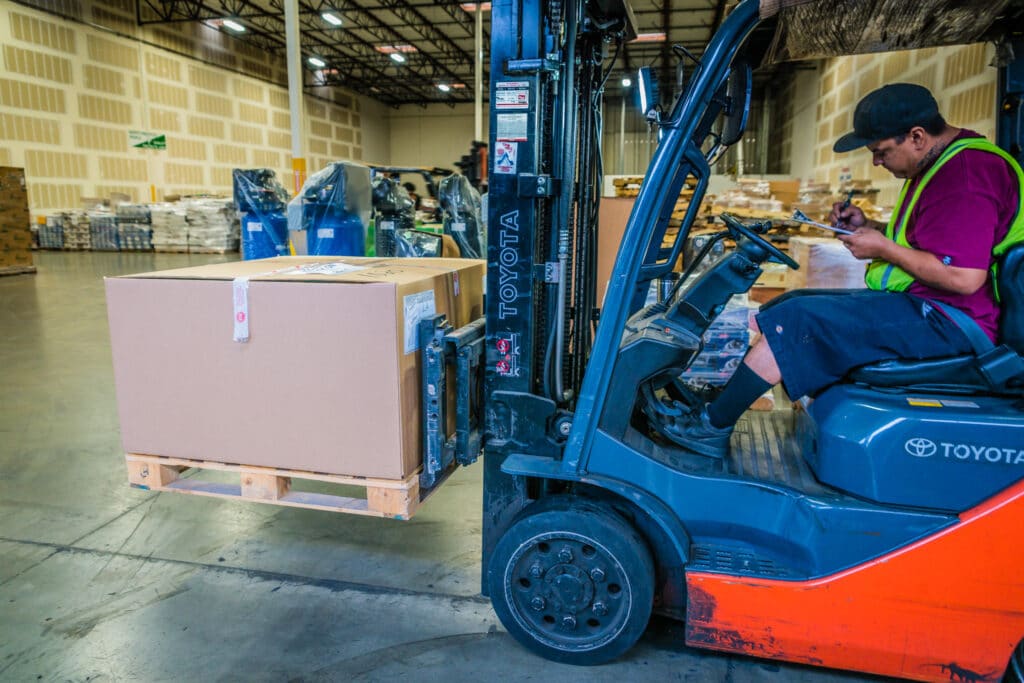
In the past, the supply chain industry has been identified as being a source of unnecessary waste, making use of a lot of resources and money, and leaving a negative footprint on the environment. However, in recent years, sustainability has been at the forefront of the industry and has become part of the identity of many businesses and brands.
Most of the environmental impact associated with the consumer sector is embedded in supply chains, according to a recent study. Pressured by consumers, and even their investors and employees, companies strive to find ways to set themselves apart through outstanding work in sustainability.
Not only does the supply chain impact the environment, but also your company’s sales, customer loyalty, revenue, and profit.
What is sustainable supply chain management?
Sustainability is broken into three pillars—economic viability, environmental protection, and social equity.
Supply chain sustainability refers to the efforts incorporated by organizations to care for the environment and the social impact of their practices throughout the supply chain lifecycle, including material sourcing, production, packaging, storage, and transportation.
The goal is to integrate environmentally and financially viable practices that lessen the impact on the environment, keeping in mind global issues such as climate change, water security, human rights, fair labor practices, and deforestation.
At a warehouse, sustainability can be enforced from the source of power to the transportation of goods. For companies that also produce goods, sustainability practices make an impact throughout the manufacturing process, even beyond the disposal and recycling of waste.
How can the supply chain be sustainable?
Supply Chain Management (SCM) systems are a great resource for companies around the world who want to track sustainability metrics and monitor multifaceted programs to help identify opportunities to use environment-friendly practices, such as making renewable energy a priority, recycling products and materials, and encouraging social responsibility among their providers.
Distribution is another area where companies can ensure sustainability practices are in place. For example, making sure the product is being sent from the closest distribution center, making less use of resources, and minimizing environmental damage.
Why is sustainability important in the supply chain?
Research shows that the supply chain accounts for more than 90 percent of most consumer goods companies’ environmental impact.
Environmental responsibility is an important focal point in the industry, considering that the supply chain has an incredible impact on the environment. The nature of the industry requires many resources to move items around the world, to get them from the manufacturer to the hands of the consumer.
The demand for goods increases, and the expectation to make the process faster and more efficient increases as well. Organizations have to continuously evaluate and implement strategies to ensure a sustainable supply chain.
How are companies adapting their models for supply chain sustainability?
Sustainability has become part of many organizations’ brands and missions. Through such, they have not only ensured customer loyalty but also decreased expenses and increased revenues.
Nike wrapped their mission and values around the goal to lead in sustainability. In the past years, the company has successfully reduced material waste and expanded renewable energy, and is now focusing all efforts on reducing its carbon footprint, understanding that 70% of it comes from material matter.
Accelerating research and development around sustainable materials, Nike works in partnership with vendors, and even competitors, to ensure their practices help fight global warming.
Patagonia is another brand that took social responsibility to the next level. In 2010, with the idea to discuss the feasibility of creating an “index of social and environmental performance”, Patagonia held a meeting gathering top leaders in the apparel industry, non-governmental organizations, academia, and the U.S. Environmental Protection Agency.
The Sustainable Apparel Coalition was created, and today 49 members (one-third of all clothing and footwear sold on the planet) are working together to ensure, “an apparel industry that produces no unnecessary environmental harm and has a positive impact on the people and communities associated with its activities.”
Partners
In the supply chain industry, vendors, suppliers, manufacturers, and subcontractors work together to get the product from raw materials, all the way to the hands of the consumer.
Given the nature of the process, visibility and lack of transparency can be some of the biggest challenges to supply chain sustainability.
It is imperative to partner with vendors and contractors who have similar goals to positively impact the environment and sustain an eco-friendly approach in all aspects of the business.
Benefits of supply chain sustainability
Consumers, employees, and investors care about sustainability and turn to brands to see what they are actively doing to decrease their impact and footprint in the environment.
One of the greatest benefits of implementing sustainability initiatives in an organization is the impact it has on branding. It creates consumer loyalty and attracts talent. According to research by Nielsen, nearly half of U.S. consumers say they would change purchasing habits to reduce their impact on the environment.
Because consumers care about how and where products are produced, they are willing to pay 2-10% more for products that provide supply chain transparency.
As much as social and environmental responsibility can impact the relationship with the consumers, it also plays a key role in the relationship with investors and partners. It has been reported that companies with unsustainable supply chain operations have seen an impact on their stock prices and business relations.
Investors know the reputational risk of working with companies that have been reportedly polluting the environment or supporting inhumane and hazardous working conditions.
Aside from benefiting relationships and a company’s reputation, sustainability can generate cost savings. It allows the organization to cut costs by optimizing resources and energy without forgoing value. “This includes sustainable operations like sustainable data centers and energy and water procurement,” reports Forbes, which also suggests that adjusting design and product manufacturing processes can boost the supply chain and create cost savings in e-waste management.
Looking forward on supply chain sustainability
The next 10 years will bring major opportunities for consumer companies. By 2025, 1.8 billion people are expected to join the global consuming class, increasing consumer spending, and the demand for goods across the globe.
Sustainability is more important than ever. Organizations can make an impact by adopting a sustainable supply chain system, and making sustainability part of every business decision.

